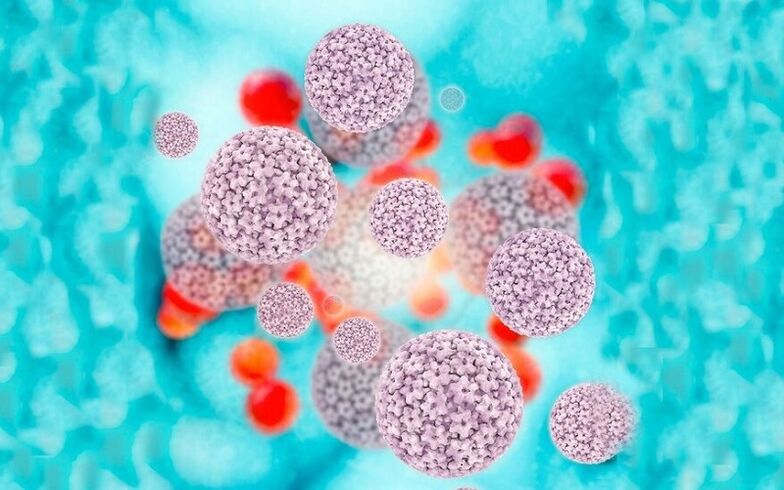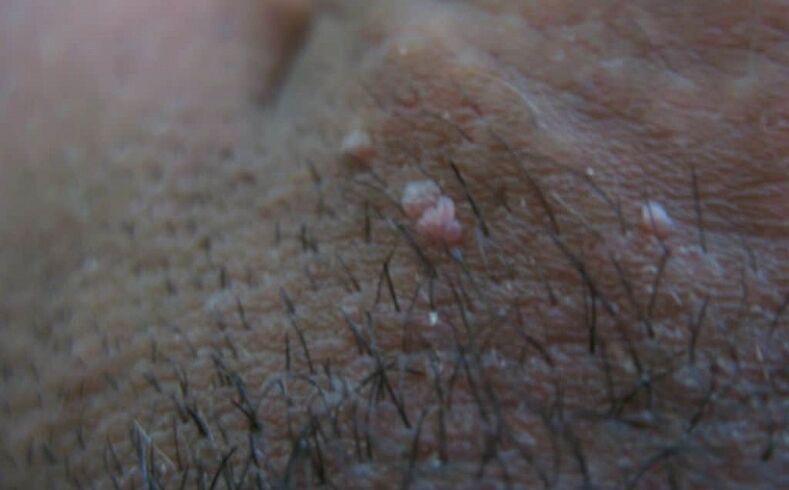Papillomas of the labia are a very sensitive problem that reduces self-esteem and quality of sex life. Papillomas need to be removed so they are difficult to hide and can cause discomfort during sex. In addition, in some cases, the growth of the female genitals can be a dangerous risk factor for cancer.
Causes of papillomas
Papillomas of the labia or genitals are the result of human papillomavirus infection. In total, there are more than 100 strains of this virus, which differ depending on the type of neoplasm and the degree of risk of developing cancer.
The virus enters the body mainly through sexual intercourse against the background of reduced immunity. At the same time, a man who infects a woman may not show signs of the virus, because papillomas in men do not always appear on the skin.
Decreased immunity occurs against the background of recent infectious diseases, vitamin deficiencies or chronic stress. Papillomas in the labia can be caused by a decrease in local immunity, various inflammatory and infectious diseases of the genitals, including fungal and bacterial vaginosis. At the same time, it is enough to use other people's personal hygiene products for the infection, so after a while there will be non-aesthetic growths during sexual intercourse.
Thus, despite the fact that the virus is transmitted from one person to another, the causes of papillomas on the lips of women are as follows:
- Decreased immunity after ARVI, pneumonia, influenza or tonsillitis;
- vaginal infections;
- lack of personal hygiene;
- stress;
- unbalanced diet;
- presence of a chronic source of infection in the body;
- perverted sex.
All of these factors lead to a decrease in general and local immunity. As a result, the body is exposed to various adverse effects and is unable to fight off the human papillomavirus.
Often, the virus is limited to human immunity and does not manifest itself. This is only true if the person is completely healthy. The virus can then remain asymptomatic for a long time. The appearance of papillomas occurs against the background of decreased immunity. If this does not happen in the coming years, the body will be able to fight the virus on its own, but self-healing usually takes at least 18 months.

What do genital papillomas look like?
The appearance of an infection in a woman's labia depends on several factors:
- type of virus;
- concentration of the virus in the body;
- localization of plants.
The formation of papillomas in the labia minora is due to the influence of oncogenic or conditionally oncogenic strains of the virus (16, 18, 31, 32, 45 and other types). Knowing what a condyloma is, it is easy to understand what such labial papillomas look like. These are small papillae with pointed edges that rise above the mucous membrane. They often do not differ in color, or are slightly lighter than mucous membranes. The appearance of the papilloma virus on the labia can lead to the development of warts on the genitals and spread to the perineum, vulva and vagina.
Condylomata always appear only on the mucous membranes. Papillomas on the inner labia of women do not appear, they appear only in areas with a thin epidermis.
Papillomas are small balls that rise above the skin. They have smooth borders of the right shape and may be slightly lighter or darker than the rest of the skin. Papillomas on the labia do not hurt when pressed, and they feel a homogeneous structure of growth under the fingers. This type of neoplasm occurs in the groin folds and labia majora.
Almost all known methods are used to remove labial papillomas because the risk of burns or deep damage to the epidermis is minimal. Treatment of papillomas in the labia minora is carried out in a complex way, because such plants are dangerous.
Warts can occur in the following areas:
- small labia;
- vulva;
- difficult;
- Cervix;
- anal opening;
- to run;
- urethra
Papillomas of the labia do not differ from images of growths in other parts of the body, and papillomas or condyloma of the vagina and vagina are difficult to detect on their own.
The appearance of labial papillomas during pregnancy is associated with decreased immunity. In this case, timely treatment of the effects of papillomavirus plays an important role, otherwise there is a risk of infection of the child through the birth canal.

Why are papillomas dangerous?
Human papillomavirus is directly related to sexual intercourse and the labia of women. First, when in contact with an infected mucous membrane, there is a risk of transmitting the virus to a sexual partner. Second, by rubbing during sexual intercourse, papillomas and condyloma can be damaged, which is accompanied by the disease. There is a risk of getting papilloma, but it can become inflamed and turn into cancer.
There are cases when a woman has a large papilloma on the labia majora due to repeated injuries. No woman is insured against such a risk. Large plants are very dangerous and should be removed first.
Papillomas of the labia minora and vagina lead to the development of cervical cancer. This is due to the activity of the papillomavirus, which is manifested by excessive division of epithelial cells in the labia minora and other parts of the mucous membrane. In this case, the damage to the cells of the cervix develops in several stages. First, erosion is caused by HPV in the labia, which then turns into dysplasia, a pre-cancerous condition. Lack of timely treatment of dysplasia leads to the development of cervical cancer.
It is important to understand that papillomas in the mucous membrane of the labia are a potential risk. Papilloma itself can turn into cancer, and not just cancer of the cervix. Signs of malignant papilloma include enlargement, pain and itching, unpleasant odor, and darkening of the skin in the affected area. If you notice such symptoms, consult a doctor - oncologist, gynecologist or dermatovenereologist as soon as possible.
Treatment and removal of papillomas
How to treat labial papillomas depends on their number and size. It is not recommended to treat on your own, but consult a doctor who will tell you in detail what to do to prevent the recurrence of papillomas on the labia.
It should be consistent to get rid of papillomas on the labia. First, the virus is suppressed, then the growth itself is destroyed and, if necessary, immunostimulatory therapy is performed. In order to accurately determine the sequence of treatment, it is necessary to submit a PCR test, which shows the activity and concentration of the virus, as well as allows to identify its strain.
If a woman is found to have 16 or 18 potentially dangerous viruses, she needs comprehensive therapy. In this case, each obtained papilloma is sent for histological analysis and a complete examination of the cervix for changes in the epithelium.
How to remove papillomas on the labia depends on the exact location. Skin neoplasms can be removed in a variety of ways - from surgery to folk remedies. Because the skin of this large labia is thick enough, there are rare complications once it is removed. In most cases, it is fair to say that formations in the labia majora do not pose a health risk or cause cancer.
Removal of genital warts from the mucous membrane is performed by laser or radio waves. These two methods are considered the most gentle, while they do not clog the growth vessels, so the risk of bleeding is minimal. Removal of neoplasms from the cervix or vagina requires histological analysis to rule out the onset of the pathological process.

Talk to your doctor about how to get rid of papillomas on the labia. If the analysis showed a high concentration of the virus in the body, there is a risk of recurrence of genital warts, so a comprehensive therapy involving three stages is carried out.
- Once the virus strain has been identified, the woman is prescribed antiviral and immunomodulatory therapy. This is necessary to suppress the virus and reduce the risk of recurrence of papillomas.
- On average, after several weeks of drug therapy, papillomas are removed using a method selected and agreed with the doctor. Laser removal or radio wave method is recommended.
- The analysis should be repeated shortly after the removal of the adults. If the virus concentration is still high, a second course of drug therapy is prescribed.
Drugs used to treat papillomas are available in tablet and ointment form. Antiviral ointments with immunomodulatory properties are recommended for the treatment of skin papillomas. If the growth occurs in the mucous membranes, it is indicated to take pills.
As a rule, after the removal of papillomas and drug therapy, the body heals on its own in a few months or years. To prevent the recurrence of papillomas, a woman should follow the rules of hygiene, maintain her immunity and avoid unprotected sex.














































































